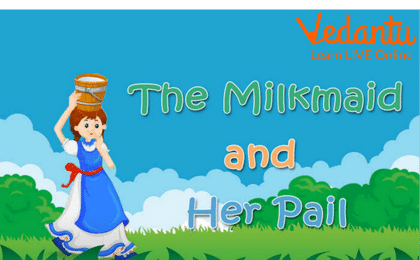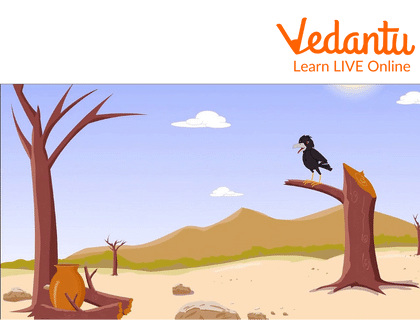Short Story for Grade 2 in English for Kids

Reading a short story for grade 2 to early toddlers helps them learn coping mechanisms for "tough or stressful circumstances." Reading aloud to kids about events that could be emotionally difficult, like starting at a new school, can start a dialogue and let kids know that their feelings are common.
Introduction to Short Story for Grade 2
You can read short stories to your children if you want to cut down their screens and relive their youth. You may teach your children life lessons and spend much-needed quality time with them by telling them stories. You can read to your children a selection of well-known short stories that offer moral lessons. Short stories for grade 2 with moral lessons are important to read and we have some of the best english story reading for class 2.
Short Story for Grade 2
The Potato, The Egg, and the Coffee Beans
John, a young boy, was upset. His dad discovered him in tears. John said that he had numerous troubles in his life when his father asked him why he was sobbing.
Simply grinning, his father instructed him to go get a potato, an egg, and some coffee beans. Three bowls were used to hold them. He then requested John to feel their texture before adding water to each bowl.
John followed the instructions. The three bowls were then put under the stove by his father. John's father instructed him to test the texture of the various foods once more once the bowls had cooled. The egg had hardened; the coffee beans had fully altered; and the coffee beans had filled the bowl of water with perfume and flavour. John also saw that the potato had grown mushy and that its skin was peeling off easily.
Moral of “The Potato, The Egg, and The Coffee Beans” Story:
Like the boiling water in the story, challenges and pressures will always exist in life. What matters most is how you handle and react to these issues!
The Milkmaid and Her Pail
There was a milkmaid by the name of Patty. She milked her cow, picked up two pails of milk with a stick, and went to the market to sell it. She started daydreaming about what she would do with the money she would receive for the milk while she was making her way to the market. She imagined purchasing a hen and earning money from selling its eggs.
She imagined spending the cash she would earn from selling the eggs and milk on a cake, a basket of strawberries, a fancy dress, and maybe even a brand-new home! She became so excited that she started to skip without thinking about the pails she was carrying. When she examined her pails, she found that they were empty and that the milk had started to spill.
Moral of “The Milkmaid and Her Pail” Story:
Before the eggs hatch, don't count your chickens! It's critical to concentrate on the means of accomplishment rather than success itself.
The Thirsty Crow
The bottoms of many ponds and lakes are dry throughout the summer. Birds travelled great distances in search of water.
This crow was one such bird who noticed a container with water at the bottom. It attempted to use its beak to reach the water, but the pot's neck was too thin. The crow repeatedly attempted to shake the pot, but to no avail. Soon after the crow became too exhausted to try. Too thirsty to fly, it couldn't. The thirsty crow suddenly had an idea!
Plop! Plip! Plop! Pebbles started to fall into the pot from it. The water climbed steadily upward. Up until its beak touched the water, the crow kept scattering the pebbles. The hungry crow was able to quench its thirst at last!
Moral of “The Thirsty Crow” Story:
Whatever the situation, intelligence and patience can always help you discover a solution! Don't give up easily ever!

The Milkmaid and her Pail

The Thirsty Crow
Note to Parents
Reading books gives you the chance to have age-appropriate conversations about real-world issues. Books with young characters who are similar to them in age and activities tend to be very popular with children.
Reading books on specific topics may help youngsters not feel alone when they deal with something new, like moving across the country, or something that could be uncomfortable, like going to the dentist. This is in addition to modelling what happens in particular scenarios.


FAQs on Short Story for Grade 2 in English for Kids
1. What is a story's central idea in the second grade?
The author's core concept is the most crucial aspect of the message she intends to convey. Finding that central idea aids in our comprehension of the text. A passage's primary point can typically be summarised in one or two sentences, and the supporting details help to explain it.
2. What questions should you ask a child after reading a story?
After your child has finished, ask a normal question: What was your favourite portion of the book,for example, Who among the characters was your favourite? What did you learn from the book that you found most interesting?
Why do you suppose the author chose to write this book?
Would you have changed the book's ending?
3. How do you convey the main idea to a child?
Techniques for Teaching the Main Idea are:
Create an anchor chart first, In the classroom, anchor charts are my favourite tool.
Reading a short story for grade 2 to early toddlers helps them learn coping mechanisms for "tough or stressful circumstances." Reading aloud to kids about events that could be emotionally difficult, like starting at a new school, can start a dialogue and let kids know that their feelings are common.




